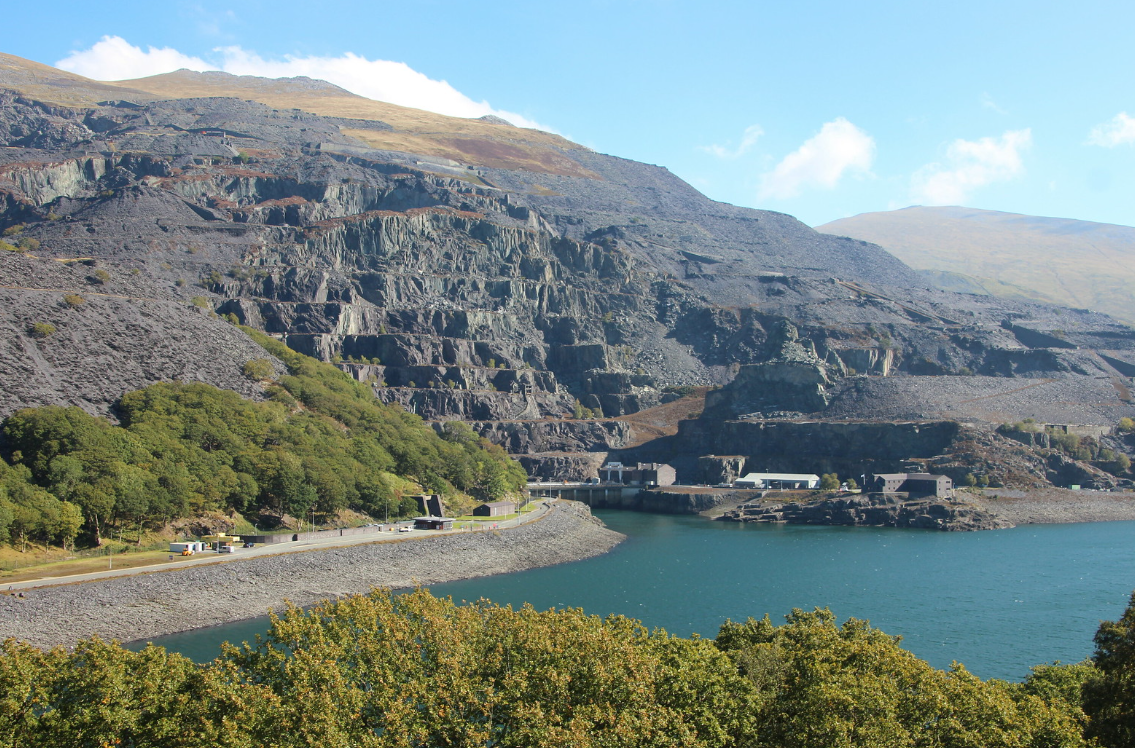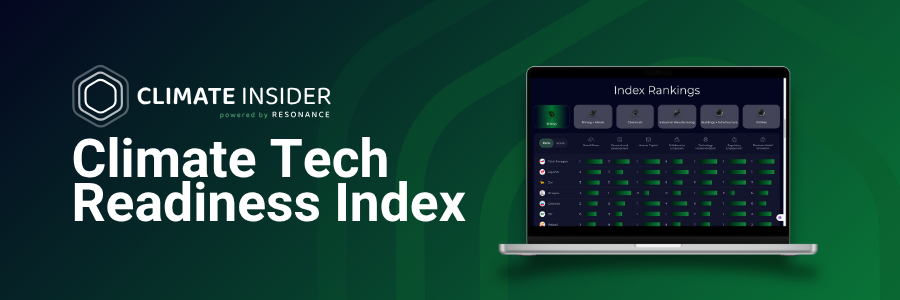When we think about energy storage, batteries tend to take centre-stage. However, it’s critical to explore long-duration energy storage solutions that go beyond batteries and offer a variety of methods to meet every energy source and application.
In a major development for the energy storage industry, Toronto-based Hydrostor recently secured $200 million in funding to scale its advanced compressed air energy storage (CAES) technology. The investment sparked this Climate Insider check-in on current developments related to non-battery energy storage solutions, which are crucial for stabilizing grids, reducing renewable energy curtailment, and enabling deep decarbonization.
While lithium-ion batteries dominate the energy storage market, they are not always the best fit for long-duration applications. Alternative non-battery storage technologies—such as pumped hydro storage (PHS), compressed air energy storage (CAES), liquid air energy storage (LAES), gravity-based storage, and thermal energy systems (TES)—are emerging as scalable, long-lasting solutions.
As global demand for energy storage surges, investors and governments continue to search for innovative approaches to ensure a reliable and sustainable energy future.

Emerging Long-Duration Energy Storage Technologies
1. Pumped Hydro Storage (PHS)
With over 160 GW of global installed capacity, pumped hydro is the most mature energy storage technology. It operates by pumping water uphill during periods of low demand and releasing it through turbines when electricity is needed. PHS has a high efficiency of 70–80% and a lifespan of over 50 years, making it a durable and cost-effective option.
- Advantages: High capacity, long lifespan, proven technology.
- Challenges: Geographic constraints (requires specific topography and large water reservoirs), high upfront costs, significant environmental impact due to alteration of river flows and potential habitat disruption (closed-loop systems mitigate some environmental concerns).
2. Compressed Air Energy Storage (CAES)
CAES systems compress air into underground caverns and release it to generate power when needed. Traditional (diabatic) CAES has an efficiency of 50–60% and uses natural gas to heat the compressed air before expansion. Adiabatic CAES improves efficiency to around 70% by recovering and storing the heat generated during compression for later use. Isothermal CAES aims to maintain a constant temperature during compression and expansion for even higher efficiency.
- Advantages: Large-scale storage capacity, potential for long-duration storage, can be integrated with renewable energy sources to reduce emissions.
- Challenges: Requires suitable geological formations (salt caverns, aquifers), diabatic CAES relies on fossil fuels, lower energy density compared to other storage methods, potential for air leakage from underground reservoirs.
3. Liquid Air Energy Storage (LAES)
LAES cools air to cryogenic temperatures, storing it as a liquid in insulated tanks. When electricity demand rises, the liquid air is heated, expands, and drives turbines to generate power. LAES is particularly useful for grid-scale storage, with companies like Highview Power developing its 50 MW/250 MWh CRYOBattery project in the UK. LAES systems have efficiencies of 50-60% and lifespans of 25–30 years.
- Advantages: More flexibly in location than PHS (doesn’t require specific geography), long duration storage, utilizes industrial waste heat to improve efficiency, scalable.
- Challenges: Relatively low round-trip efficiency, high capital costs, energy-intensive liquefaction process.
4. Gravity-Based Storage
Gravity-based storage solutions convert electrical energy into gravitational potential energy. Companies like Green Gravity are developing systems that use heavy blocks or mine shafts to store energy. These systems offer 80–85% efficiency with minimal degradation over 30 years, making them a promising low-maintenance option for energy storage in regions without hydro resources.
- Advantages: Long lifespan, relatively high efficiency, low degradation, potential to repurpose existing infrastructure (e.g., mine shafts).
- Challenges: Location-dependent (requires suitable sites with elevation differences or underground shafts), potential challenges related to the structural integrity of mine shafts, environmental impact of using heavy blocks, energy losses in lifting and lowering processes.
5. Thermal Energy Storage (TES)
Thermal energy storage (TES) systems store excess energy as heat or cold, later converting it back into electricity or using it for industrial applications. Different types include:
- Sensible Heat Storage: Uses materials like water, molten salt, or rocks to store heat (or cold) by changing their temperature.
- Latent Heat Storage: Uses phase change materials (PCMs) to store heat by changing their state (e.g., solid to liquid) at a constant temperature.
- Thermochemical Storage: Uses reversible chemical reactions to store and release heat.
TES is particularly valuable for grid balancing, industrial applications and district heating/cooling.
- Advantages: High efficiency, relatively low cost (for some methods), versatile applications (electricity generation, heating, cooling).
- Challenges: Temperature ranges are limited by the storage material, heat losses during storage, some materials can be corrosive or require special handling.
6. Flywheels
Flywheels store energy by accelerating a rotor (a heavy rotating cylinder) to a very high speed and maintaining the energy as rotational kinetic energy. When energy is needed, the flywheel’s rotational energy is converted back into electricity. Modern flywheels often use composite materials and magnetic bearings to reduce friction, achieving efficiencies of up to 90%. They are well-suited for short-duration, high-power applications like frequency regulation and grid stabilization, offering lifespans exceeding 20 years with minimal degradation.
- Advantages: Rapid response time (high power delivery capability), high efficiency, long lifespan, minimal degradation.
- Challenges: Limited energy storage capacity compared to other technologies, relatively high capital costs, energy losses due to friction (although minimized by magnetic bearings), safety concerns related to high-speed rotation.
The Investment Landscape
Some of the investments we have highlighted over the past year are:
| Hydrostor | $200M to expand A-CAES projects | |
| Highview Power | $380M for LAES development in the UK | |
| Green Gravity | $6M for its gravitational energy storage technology | |
| MGA Thermal | $1.6M to accelerate the completion of a Demonstration Unit for its modular thermal block technology | |
| Torus | $67M in financing to expand its energy storage portfolio (which includes flywheel technologies) |
Partnerships & Projects
Projects are ramping up all over the world, in several different formats. China is a major proponent of non-battery energy storage, pioneering gravity energy storage systems as well as compressed air energy storage. India is making forays into pumped storage, while California-based Amber Kinetics is developing a flywheel energy storage facility. Here are more details about the recent developments in partnerships and projects for long-duration energy storage.
Energy Vault’s EVx Gravity Energy Storage System
Energy Vault’s Rudong project in Jiangsu Province, China, represents the world’s first commercial-scale deployment of a non-pumped hydro gravity energy storage system (GESS). The 25 MW/100 MWh EVx™ system is designed to store and dispatch renewable energy. Located adjacent to a wind farm and the national grid, the system is expected to achieve a round-trip efficiency exceeding 80% and has a projected operational lifespan of 35 years.
Pumped Long Duration Energy Storage Projects in India
- THDC India’s 1,400 MW Project: THDC India has announced plans to develop a 1,400 MW pumped storage project at Dangari in Jashpur district, Chhattisgarh.
- SJVN’s 1,800 MW Project: SJVN has signed a Memorandum of Understanding with the Chhattisgarh government and CSPGCL to develop a 1,800 MW pumped storage project in Kotpali, Balrampur district.
Compressed Air Energy Storage in China
A state-backed consortium in China is constructing a 300 MW/1,200 MWh compressed air energy storage (CAES) project in Xinyang, Henan province. This project features an entirely artificial underground cavern and represents a significant step in the commercialization of CAES technology. With an investment of approximately $300 million, the project is slated for completion by the end of 2026.
RMP Group and Voltanova’s Partnership for Thermal Energy Storage Solutions
RMP Group has partnered with Voltanova to transition towards sustainable thermal energy storage solutions. This collaboration aims to develop and implement TES systems that can efficiently store and release thermal energy, thereby reducing reliance on fossil fuels and supporting renewable energy adoption.
Drax – Cruachan Pumped Storage Hydro Power Station
Drax is developing an underground pumped hydro storage plant at the Cruachan Power Station in the UK. It will add 600MW of generation capacity more than doubling the current system. l
Snowy 2.0 Pumped Storage Power Station, Australia: This project aims to connect two existing reservoirs in New South Wales through a 27-kilometer underground tunnel, creating a pumped-hydro facility with a capacity of 2200 MW and storage of approximately 350,000 MWh
Long-Duration Energy Storage Research
Ongoing research is critical to ensuring that long-duration energy storage technologies are environmentally sound, as well as expanding the methods that can be used to store energy. Research is emerging on the general environmental and social impact of different energy storage technologies, ranging from ammonia to compressed air to underground pumped energy storage. Other research firms, including Climate Insider, have also produced leading research on specific energy storage technologies to assist companies in choosing their methods.
Some of the ongoing research on long-duration energy storage technologies:
Environmental and Social Implications of Energy Storage Technologies
A report by the UK Environment Agency, Net zero: Environmental and social implications of energy storage technologies, examines the potential environmental and social impacts of various energy storage technologies, including ammonia storage, hydrogen storage, compressed air energy storage (CAES), thermal energy storage, underground pumped hydroelectric storage, and battery energy storage systems.
Reusing Depleted Oil and Gas Wells for Green Energy Storage
Researchers at Penn State University propose repurposing depleted oil and gas wells for geothermal-assisted compressed air energy storage (CAES). By utilizing the natural geothermal heat in these wells, the efficiency of CAES can be improved by 9.5% over existing technology.
Combining Concentrated Solar Power with Compressed-Air Energy Storage
The EU-funded ASTERIx-CAESar project is developing a high-efficiency solar thermal power plant that integrates concentrated solar power with compressed-air energy storage. This innovative approach captures and stores thermal energy, ensuring solar power availability even when the sun isn’t shining.
Interested in more research? Here are some of the most recent papers on a Climate Insider market intelligence platform:
The Future of Long-Duration Energy Storage
Long-duration energy storage technologies are evolving from niche applications into mainstream grid solutions. As these technologies mature, their strategic impact reaches beyond technical aspects to transform energy markets, business models, and decarbonization pathways.
Climate Insider analysis identifies six critical factors that will drive the adoption and deployment of long-duration energy storage technologies:
Technology Commercialization Timeline – Leading technologies—including advanced CAES and gravity storage—are progressing from pilot to commercial scale at varying rates. Organizations should establish technology tracking mechanisms and develop staggered adoption roadmaps that match specific technologies to their near-term and long-term carbon reduction milestones.
Investment De-Risking Strategies – While recent funding rounds show growing investor confidence, successful deployment requires careful risk management. Organizations should implement portfolio approaches by participating in technology-specific consortia, utilizing blended finance structures, and creating staged investment gateways tied to performance metrics.
Grid Integration and Value Stacking – Successful projects must tap multiple revenue streams beyond energy arbitrage. Organizations should conduct comprehensive value stream analyses, engage with regulatory proceedings on market design, and develop hybrid use cases that combine grid services with on-site benefits to maximize returns.
Scale-Up Infrastructure Requirements – Moving to commercial scale demands robust infrastructure support. Organizations should create supply chain readiness assessments, develop workforce training programs for specialized skills, and engage with utilities early on interconnection requirements and grid integration standards.
Market-Specific Implementation Pathways – Deployment strategies must adapt to local conditions. Organizations should conduct site-specific feasibility studies, engage with local stakeholders to address community needs, and develop modular deployment approaches that can be tailored to different market conditions.
Ecosystem Collaboration Models – Faster adoption depends on partnerships between technology providers, users, utilities, and regulators. Organizations should establish formal innovation partnerships with technology developers, create cross-sector working groups with complementary stakeholders, and develop shared demonstration projects that distribute risk while accelerating learning.








